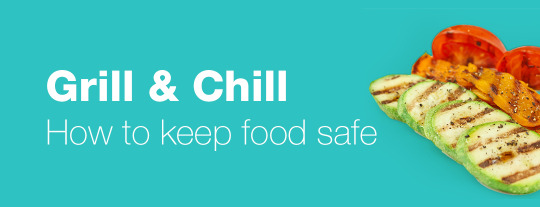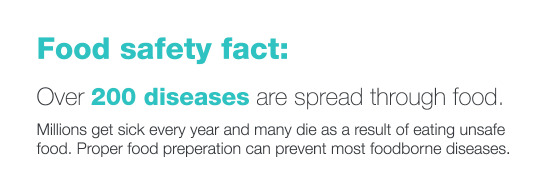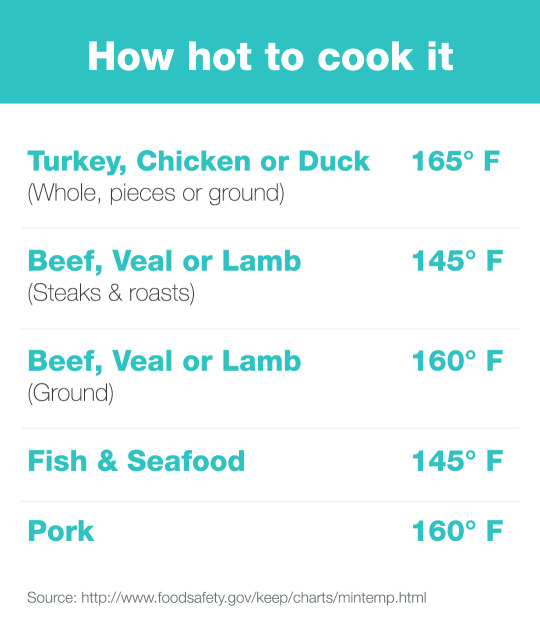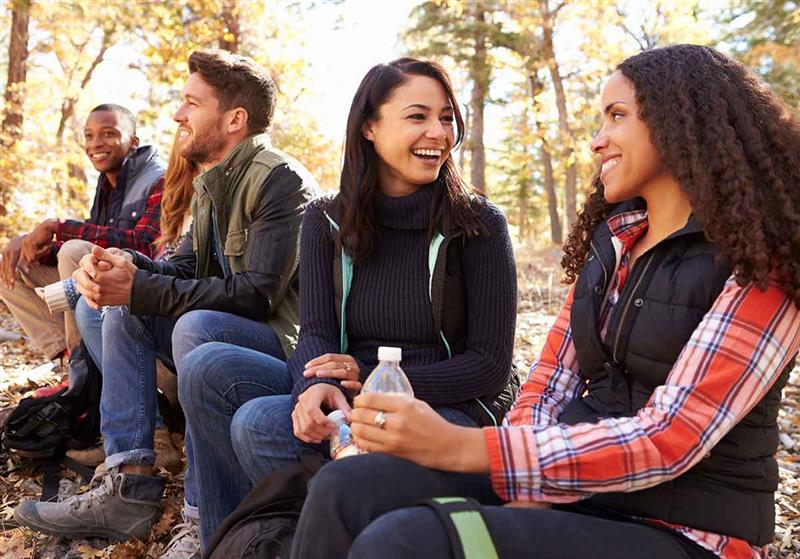
Before your next picnic or barbeque, make sure you don’t bring germs to the party. As temperatures rise, so does our risk of foodborne illness.
At any warm-weather outing such as a barbeque, picnic, or tailgate party, it’s critical to handle food properly in order to not get sick. Follow these simple safety tips to keep foods both delicious and safe when eating outdoors:
Safety Starts at the Grocery Store
- Pick up cold and frozen foods at the end of your trip, right before checkout.
- Check expiration dates on perishable foods — never buy items past the “sell by” or “use by” dates.
- At checkout, be sure to bag raw meat, poultry, and fish separately. Keep them apart from the rest of your groceries.
- Drive right home from the store. If you have a long drive, bring a cooler or insulated bag with an ice back with you to keep cold foods at a safe temperature (40 degrees Fahrenheit or below).
- Don’t delay unpacking when you get home. Immediately place cold items in the refrigerator and frozen food in the freezer.
There’s a Lot to Protect Against

Source: http://www.who.int/features/factfiles/food_safety/facts/en/
Keep Hands and Surfaces Clean
- Wash your hands with soap and water often — especially before, during, and after preparing food.
- If running water isn’t available, bring moist towelettes or a jug of water and soap to wash hands and surfaces.

Don’t forget to rinse your melon before you slice it!
A knife or peeler passing through the rind can carry pathogens from the outside into the flesh of the melon. Rinse your melon under running tap water while rubbing with your hands or a clean brush.
Source: Fightbac.org
Prepare Properly
- At home, defrost meat in the refrigerator or microwave. Do not thaw it on the kitchen counter or outside.
- Marinate raw meat, poultry, and fish in a covered container in the refrigerator, not on the counter. Never reuse the marinade unless it has been boiled to destroy harmful bacteria.
Wash and dry that apple!
Rinse fruits and veggies under running water, but also make sure to also dry them with a clean cloth or paper towel. These two simple steps will reduce harmful bacteria on produce.
Source: http://www.fightbac.org/
Pack and Transport Safely
- Securely wrap raw or thawed meat, seafood or poultry in plastic wrap or sealed containers for transport. This keeps their juices from contaminating other food items. You can also pack meat in one cooler and all other foods in another.
- Keep cold food cold. Put cold food in an insulated cooler with plenty of ice or frozen gel packs to keep the temperature at 40 degrees Fahrenheit or below. This will help prevent the growth of foodborne bacteria.
- Don’t transport the cooler in the trunk of the car where it can heat up quickly. Instead, keep the cooler in the air-conditioned parts of the vehicle during travel.
- Be sure to pack enough plates and utensils for both eating and serving food. Don’t handle both raw and cooked meat with the same items. You can prevent bacteria from raw foods from spreading to other cooked foods —known as cross-contamination.
Cook and Serve at Correct Temperatures
- Use a meat thermometer to make sure foods are cooked to the proper temperature.
- Don’t partially grill meat or poultry to finish cooking later. This can encourage bacteria to grow.
- Serve hot foods hot — all hot food should be at or above 140 degrees Fahrenheit.
- Don’t let food sit out too long. Once food is served, be sure to throw away any perishable items left out more than two hours (one hour if outdoor temperatures are above 90 degrees Fahrenheit).

By Karen Babos, D.O., M.B.A.
Karen Babos is a primary contributor to the Stay Well blog and the Vice President of Clinical Programs and Quality for Walgreens. She is triple-board certified in internal medicine, geriatric medicine and hospice and palliative care.

